My journey with robotics started two years before writing the Educator Initiative Grant with the GAR Foundation. This journey started with a trip to the LEGO Store. (This was at my wife’s suggestion. She likes to remind me that she is the reason this journey got started in the first place. This just proves that behind every great man is an even greater woman!) That is where I came face to face with what would change the trajectory of my career. Remember, I was an elementary classroom teacher trying to get my students to pass the wretched Ohio Achievement Tests. I didn’t get to spend much time researching new technologies in education. But now I had just moved into the junior high computer technology role and needed to keep focused on these new technologies.
While there I noticed up on the shelf, you know where the expensive stuff sits, was a LEGO Mindstorms NXT kit. I looked and looked. Then I realized what it was. It was a LEGO Robot. WHAT? I vaguely remembered LEGO coming out with such a thing, but it wasn’t really on my radar. Still that box felt to me like the Red Ryder Carbine Action 200-shot Range Model air rifle Ralphie wanted. I think while I was looking up at it, a little light shined on it like it was sent from Heaven. Being tall I was able to reach up, pull it down and get a closer look. This thing came with motors and sensors. WHAT? Can you relate? I wanted it so bad, but with a wife who was staying at home with two young daughters, it just wasn’t in the budget. Although I tried to talk my wife into getting it, purely for the sake of our girls education! I thought and thought about that robot. I knew I wanted to integrate that into my class somehow.
So, I did what I do best and that was BEG my curriculum director to buy me a robot. I asked to start a robotics club at my school. The school bought one kit and I met with students before school. Soon I had twelve students showing up at 6:30 in the morning before school. That was enough to convince the curriculum director to purchase one more kit.
After almost a year of holding this club, I convinced my principal to allow me to have one section of a STEM class where I could really dive into teaching how to program these two robots more effectively. This class had 12 students we pulled from the study hall.
The entire time I was working with students either in a club or in a class my mind was formulating my proposal. I needed a great idea. I needed a plan. I wanted to see every student have the opportunity to take a robotics course that would allow them to learn to program and build robots.
In February of 2014 that proposal was written. I requested $14,500 to start a robotics program at Springfield High School and Junior High. My proposal asked for robots to allow for the creation of two different levels of classes, software to take the programming to the next level, and professional development. The PD was by far the most valuable resource. I was already learning how to program, but it gave me the confidence as well as the tools to teach robotics. In May of 2014 I was awarded my first GAR grant and at that point the journey really too off.
The first year, 2014-2015, I had classes of 8th graders and high schoolers taking what would become robotics 1 and I also had high schoolers taking what would become robotics 2. The enrollment of these classes started strong and has stayed steady all these years.
In 2015 I started to integrate robotics into my 7th grade computer class. I wanted to set a more firm foundation for those who might be interested in taking one of the robotics classes. Students used the free LEGO Mindstorms software to program using blocks instead of the text based programming the robotics classes use. I found that the 7th graders had a chance to experiment with the robot and found that they either really liked it or it wasn’t really their cup of tea.
For those who enjoyed and were excited to program I was able to get a bit more advanced with the robotics classes since students already had some experience with the robot.
This success led a colleague to write a proposal and get awarded a GAR grant for integrating robotics at our two elementary schools. Now students in K-3 were having the opportunity to learn basic coding skills.
During this time I had become a robotics coach at my youngest daughter’s school. They participated in the First LEGO League (FLL) competition. FLL is an internationally run competition that is very well organized and managed. The only drawback is that the mission models the robot must complete change each year. This is an expense that many schools cannot take on.
This experience with a robotic competition would lead into starting a junior high robotics team at my school. I took students to a competition for a couple of years but was looking for something different. I wanted the atmosphere of an FLL competition, but without all the expense. That led me to create my own competition utilizing the space challenge set from LEGO. We had been using this set in class for years and the students in class enjoy the days we work on completing missions.
Last year was our first year with the competition. We started with two schools and spent the day competing. It was a huge success. Contributing to the success was the fact that there were some representatives from neighboring districts that came to see the competition and decided to join us for this years competition.
But as always I couldn’t stay stagnant. My latest proposal was to take robotics down to our intermediate school and to have my robotics team teach students not only how to program but how to complete missions so they can join us this year at the competition. We were awarded the grant from GAR Foundation and we have travelled to see the 6th graders twice this school year.
While on this journey I have been able to welcome teachers into my classroom to see what I do. Many have gone on to write and be awarded their own GAR Foundation grants to start robotics programs at their schools. I have had students take summer camps that I facilitate using robots. I now have four drones that we program and these drones have been just another step along this journey.
This journey all started with that trip to the LEGO Store. I couldn’t and wouldn’t have travelled so far and had such an impact on so many teachers and students if it hadn’t been for the GAR Foundation believing in my dream, my vision, in me.

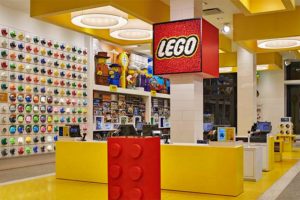
 I have been using the LEGO EV3 robotics kits for five years. (I originally bought 12 kits with funds from a grant I wrote. I also have 10 NXT kits combined with a TETRIX kit for a more robust robot.) The EV3 kits have been very reliable, but after at least a thousand students using these robots I am seeing some signs of wear and tear on the brick. For example, the plastic covering over the display is cracked. This isn’t just from the occasional drop. These cracks do not effect the working of the display or brick function. I have had a few motors go bad, but with students wanting to push it like a hot wheels car, I’m surprised they have lasted as long as they have. At $27 US a piece, this isn’t too much of an issue to replace.
I have been using the LEGO EV3 robotics kits for five years. (I originally bought 12 kits with funds from a grant I wrote. I also have 10 NXT kits combined with a TETRIX kit for a more robust robot.) The EV3 kits have been very reliable, but after at least a thousand students using these robots I am seeing some signs of wear and tear on the brick. For example, the plastic covering over the display is cracked. This isn’t just from the occasional drop. These cracks do not effect the working of the display or brick function. I have had a few motors go bad, but with students wanting to push it like a hot wheels car, I’m surprised they have lasted as long as they have. At $27 US a piece, this isn’t too much of an issue to replace.



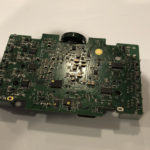
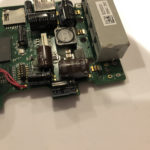

 Over the past few years I have slowly converted my 7th grade course from teaching mostly computer productivity apps such as Word, Excel and PowerPoint (Or Google Docs, Sheets and Slides) to more computer science opportunities such as Scratch.
Over the past few years I have slowly converted my 7th grade course from teaching mostly computer productivity apps such as Word, Excel and PowerPoint (Or Google Docs, Sheets and Slides) to more computer science opportunities such as Scratch. It has been weeks now since I travelled to Ann Arbor, Michigan for Picademy. On my three hour drive home I thought of various ways to utilize my Raspberry Pi at school. One idea I came up with was a photo booth for the start of school. A Raspberry Pi photo booth isn’t a new idea. But my implementation of the photo booth might be a new. Isn’t that what we do as teachers? We take the ideas of others, and repurpose and modify them to use in our classrooms and schools for our kids. That’s what I did.
It has been weeks now since I travelled to Ann Arbor, Michigan for Picademy. On my three hour drive home I thought of various ways to utilize my Raspberry Pi at school. One idea I came up with was a photo booth for the start of school. A Raspberry Pi photo booth isn’t a new idea. But my implementation of the photo booth might be a new. Isn’t that what we do as teachers? We take the ideas of others, and repurpose and modify them to use in our classrooms and schools for our kids. That’s what I did. Summer is quickly coming to an end. As the years go by, summer gets faster and faster. It seems to be traveling at the speed of light.
Summer is quickly coming to an end. As the years go by, summer gets faster and faster. It seems to be traveling at the speed of light.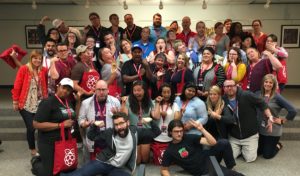 Last Thursday and Friday I had the incredible opportunity to participate in a training session called Picademy. For those who have not heard of Picademy, it is the
Last Thursday and Friday I had the incredible opportunity to participate in a training session called Picademy. For those who have not heard of Picademy, it is the 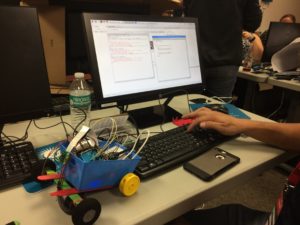 My group started with my idea in building a robot. I wanted to see if we could build a low cost robot that would be affordable to my students. The PiRover is pictured to the left. I had a need and my group worked to find a solution to the need.
My group started with my idea in building a robot. I wanted to see if we could build a low cost robot that would be affordable to my students. The PiRover is pictured to the left. I had a need and my group worked to find a solution to the need.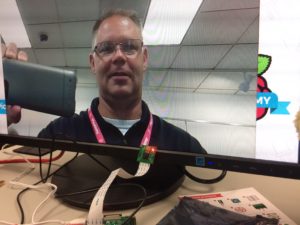 Overall, Picademy invited us to take on a maker mindset. Digital making requires a shift in how we teach. It changes the our role as teacher and the student’s role in learning. This maker mindset is where real world collides with the educational institution.
Overall, Picademy invited us to take on a maker mindset. Digital making requires a shift in how we teach. It changes the our role as teacher and the student’s role in learning. This maker mindset is where real world collides with the educational institution.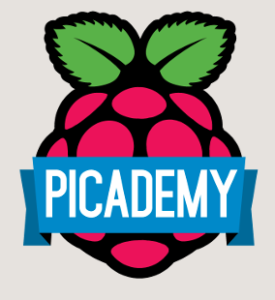 I am super excited to have the opportunity to be a part of Picademy this July. I have wanted to attend for years and it finally is close enough and the logistics worked out to make it a possibility.
I am super excited to have the opportunity to be a part of Picademy this July. I have wanted to attend for years and it finally is close enough and the logistics worked out to make it a possibility. As we finish up yet another school year I want to applaud all of you teachers for using your super power to help children young and old find their passion and potential.
As we finish up yet another school year I want to applaud all of you teachers for using your super power to help children young and old find their passion and potential. Last month I completed a four week online course called
Last month I completed a four week online course called